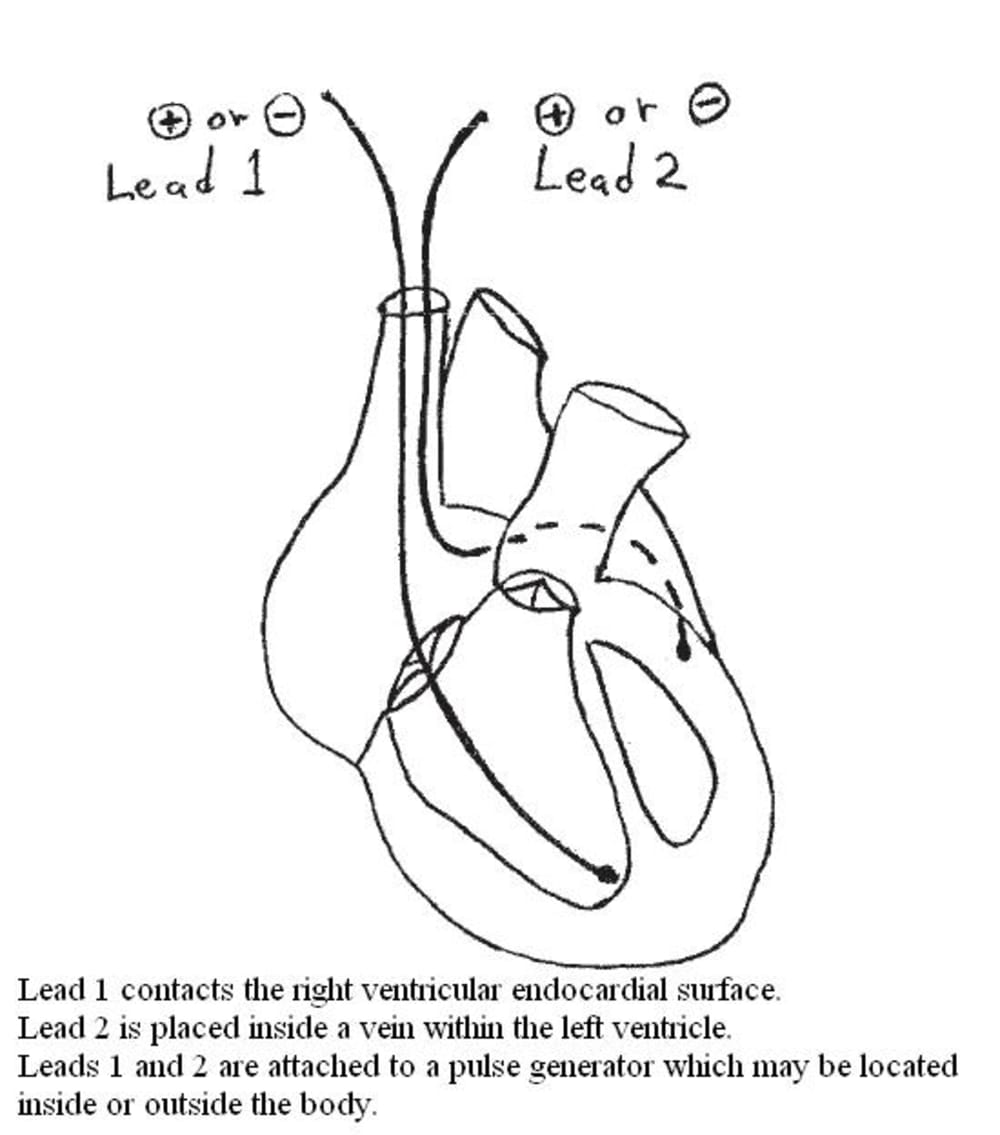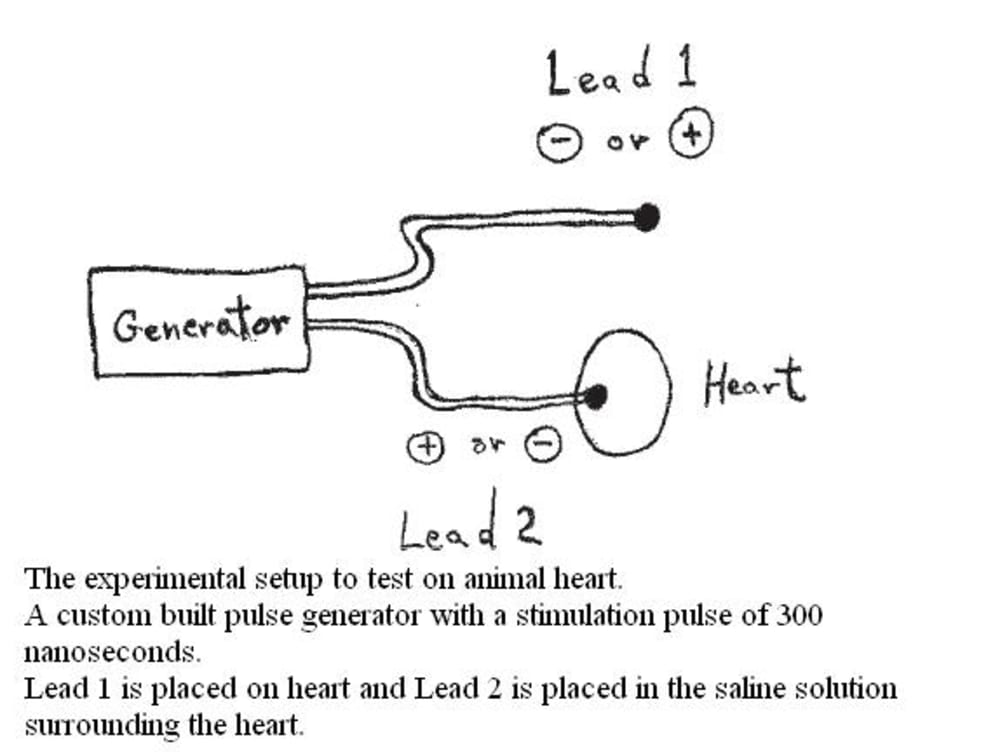Stimulation Waveform and System for Polarity Independent Cardiac Resynchronization
Cardiac resynchronization by electrical stimulation can increase heart performance and avoid the need for heart transplantation for patients with heart failure. Resynchronization is achieved with electric pulses delivered from multiple electrodes in multiple regions of the heart. When conventional cardiac stimulation pulse waveforms are used, the anodal electrode is less efficient and has higher stimulation threshold than cathodal electrode. This results in either a higher stimulation strength setting in order to exceed the higher anodal threshold required if the generator is attached in bipolar mode in order to use both electrodes to stimulate two regions of the heart. Likewise, it could result in wasted application of energy if the generator is attached in unipolar mode with one of the electrodes at a remote location where that electrode does not stimulate the heart. A higher efficiency of stimulation of multiple regions of the heart, and hence increased battery life in an implanted cardiac resynchronization system, would be achieved if the anodal electrode has the same threshold as the cathodal electrode. Then both electrodes are used to stimulate different regions of the heart, increasing efficiency, and a single low generator setting may be used instead of requiring a setting that exceeds a higher anodal threshold, further increasing efficiency.
The invention consists of cardiac stimulation with 300 nanosecond pulse waveform that produces the same threshold for the anodal and cathodal electrodes, and a stimulation system for the delivery of the pulses to the heart in such a way that both the anodal and cathodal electrodes stimulate different regions of the heart with a single generator having a low current setting. The recent data using the waveform to stimulate hearts indicates stimulation threshold by this pulse waveform is polarity independent and occurs by a cellular mechanism that is different from the mechanism of stimulation with conventional pulses.
An embodiment of the invention incorporates one or more bipolar stimulation systems with each system having its anodal and cathodal electrodes located in the heart and separated by at least one centimeter or several centimeters so that they stimulate different regions of the heart. For each bipolar stimulation system, the anodal and cathodal electrodes will be attached to a single pulse generator. Since the anodal and cathodal electrodes have the same threshold when the cardiac stimulation waveform in this invention is used, the generator output will not need to be set above an anodal threshold that exceeds the cathodal threshold as it would for conventional waveforms. In conceived embodiment of this invention, resynchronization of the heart by the anodal and cathodal electrodes, and smaller number of generators compared with prior art. These advantages will increase efficiency of the resynchronization, increase the lifetime of the systems battery, simplify implantation, and will eliminate need for a canister or another implanted object located remotely from the heart to serve as an electrode.
Figures show the setup for the electrodes in experimental animal heart and later for use in human heart.
Like this entry?
-
About the Entrant
- Name:Hrishikesh Phadke
- Type of entry:teamTeam members:Hrishikesh Phadke, Stephen Knisley
- Hardware used for this entry:Custom pulse generator for nanosecond pulsesSoftware used for this entry:none
- Patent status:pending





